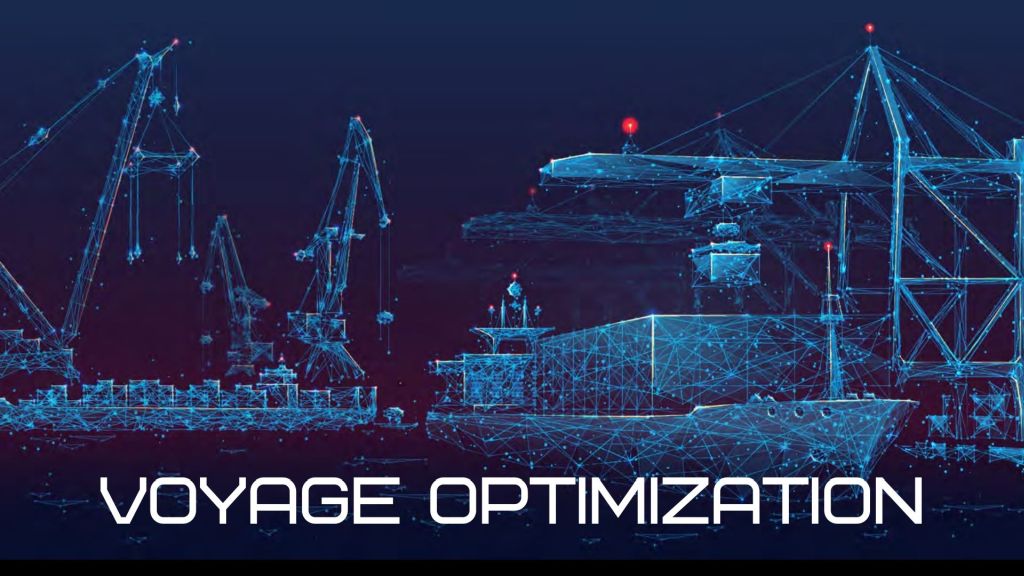
(www.MaritimeCyprus.com) New study on real-life fleet shows that voyage optimization enables ships to reduce their emissions by 7.3% and maintain their CII ratings for an additional two to three years, giving shipowners precious decision-making time on decarbonization measures.
NAPA, a maritime software and data analysis expert, and classification society Nippon Kaiji Kyokai ("ClassNK”) have announced the results of a joint study conducted with Marubeni Corporation, which has measured the impact of voyage optimization on the greenhouse gas emissions and Carbon Intensity Indicator (CII) ratings of a real-life fleet.
The research found that a vessel’s fuel consumption and CO2 emissions can be reduced by up to 7.3% by using NAPA Voyage Optimization. Moreover, the analysis shows that voyage optimization can improve a vessel’s CII by an average of 5-6%, enabling ships to maintain their ratings for an additional two to three years.
The joint research was carried out using NAPA’s ship performance model and voyage simulation tools. It used data on all voyages, weather and ocean conditions in 2021 for a group of bulk carriers owned and operated by Marubeni. The potential reductions in fuel consumption and CO2 emissions were measured by “retro-optimizing” each voyage to incorporate weather routing, using the data on weather and sea conditions that was available at the time and maintaining the same departure and arrival times.
ClassNK provided advice on the simulations, verified the calculated values and confirmed the results, while Marubeni provided the vessels for the demonstration tests, as well as its experience and expertise on operational aspects.

The joint study highlights the importance of optimizing voyages to improve a vessel’s rating under the International Maritime Organization’s CII regulation, which rates the carbon intensity of each vessel on a scale from A to E. It found that using NAPA Voyage Optimization can boost a vessel’s CII rating by 5-6%, which in many cases enables it to move up one rank (from B to A, for example). It also enables vessels to remain in the same category for two to three years longer as the requirements for each CII category gradually become stricter, forcing ships to reduce their emissions over time. Crucially, these improvements do not require any additional installation or equipment on board.
Naoki Mizutani, Managing Director at NAPA Japan, said: “This study with Marubeni is important as it demonstrates in tangible terms the impact that voyage optimization can have on the emissions and CII ratings of a real-life fleet at sea today. This is critical for businesses throughout the supply chains, informing strategic and financial decisions as legislation enters into force.
“Our analysis shows that substantial emissions reductions can be achieved with tools that are available today. There is no reason to wait given the scale of the climate crisis. The study confirms that voyage optimization will be a powerful tool for the industry, not only to ensure compliance with CII requirements, but also to support shipping’s decarbonization journey.”
Takayuki Hase, General Manager of Ship Department at Marubeni, said: “We are proud to partner with NAPA and ClassNK on this unique study, which provides greater clarity for the entire maritime industry on how we can collectively reduce our carbon footprint through digital solutions that make our operations smarter and more efficient. As we navigate a new regulatory environment, data-driven insights are key to accurately assess our starting point, and fully understand the practical impacts. Based on cooperation and collaboration with industrial leading companies, we aim to contribute greener, more sustainable shipping though all practical methods.”
Yoshimichi Sasaki, General Manager of Digital Transformation Center at ClassNK, said: “CII implementation poses challenges to shipping companies not just to ensure compliance but to plan and manage GHG emissions from their fleet, which directly impacts their competitiveness. Visualizing ships’ emissions should be a key initial step to envisage the way for optimized GHG management systems. The study based on the actual voyage data has successfully demonstrated the value of the simulation in generating insights. ClassNK will use its outcome to enhance our certification service range which is responding to decarbonization trends and the advancement of digital technology.”
Source: NAPA, ClassNK and Marubeni

About NAPA
In its over 30 years of operation, NAPA has become a global leader in developing and scaling software, services and data analysis for a safer, smarter, and more sustainable maritime industry.
NAPA operates globally, with 190 employees in eleven countries in Europe, Asia and the Americas, and has a turnover of more than €23.8m. To date, NAPA has 420 user organizations for its design solutions, nearly 3,000 installations onboard vessels, and a growing number of subscribers for its cloud-based fleet services.
For more information, visit www.napa.fi
About ClassNK
Established in 1899, ClassNK is a classification society dedicated to safety and environmental protection through third-party certification. ClassNK has conducted diverse technical services including surveys and classifications of ships and marine structures based on its own rules, international conventions on behalf of more than 100 flag states, management system certifications in line with ISO and other industry standards. ClassNK has committed to provide the industry with its full support to pave the way for digitalization and decarbonization challenges through the expanding certification service and R&D with industry partners.
For more information, visit www.classnk.com
About Marubeni
Marubeni Corporation and its consolidated subsidiaries use their broad business networks, both within Japan and overseas, to conduct importing and exporting (including third country trading), as well as domestic business, encompassing a diverse range of business activities across wide-ranging fields including lifestyle, ICT business & logistics, food, agri business, forest products, chemicals, metals & mineral resources, energy, power, infrastructure project, aerospace & ship, finance, leasing & real estate business, construction, industrial machinery & mobility, next generation business development and next generation corporate development. Additionally, the Marubeni Group offers a variety of services, makes internal and external investments, and is involved in resource development throughout all of the above industries.
For more information, visit https://www.marubeni.com













